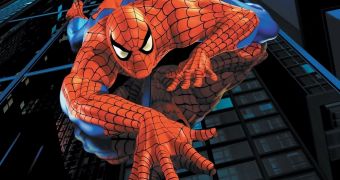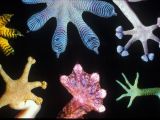If you like the red-blue suit, wear it, as people could climb vertical walls in a not such a remote future just like the comics/movie superhero Spiderman. Nature already developed the technology, which is employed by spiders, many insects and gecko lizards. All these species have tiny "hairs" on the tip of their feet or legs (as it is the case with the geckos) that permit them to adhere to vertical surfaces.
Several investigations showed that geckos can stand hundreds of times their own body weight. A 2002 American research revealed that the adhesion power in geckos was delivered by the very weak intermolecular forces, called "van der Waals", which emerge when differently electrically charged molecules attract one another.
The sum of billions of hair-like structures of different sizes and patterns allows the geckos to climb vertical walls and even hang upside down on polished glass.
In the new research, Professor Nicola Pugno, from the Polytechnic of Turin, Italy, has assessed the power necessary to stand an adult human weight on the same manner.
The issue is that as the sticky surface grows, the adhesion power decreases, so that a glove covered with artificial gecko hairs fitting a man's hand is much less adhesive than a gecko's foot.
But there is hope: the gecko employs just a percentage of the maximum theoretical stickiness resulted from the sum of the van der Waals forces.
"Some researchers were able to measure a [theoretical] adhesion strength 200 times higher than the adhesion strength in the gecko. But between theory and practical applications there is a large gap. If we are able to make a surface a little bit stronger, so that the size effect vanishes, we might be able to make a suit with the same adhesion as a gecko," said Pugno. Pugno believes that carbon nanotubes of just a few nanometers in diameter, could imitate the gecko's microhairs, as they can be remarkably resistant and put into larger fibers.
A real Spiderman suit should prevent three problems: enough adhesive power, easiness in detachment after getting stuck and easiness for cleaning itself, as dirt particles can affect the wan der Waals, the suit's adhesive qualities.
One solution would be a water repellent suit: water droplets on their way out can drive away the dirt particles with them. This quality could be obtained by changing the geometrical pattern (topology) of the suit's surface.
"To have all these mechanisms working together is difficult, because they are in competition with one another," Pugno told the BBC News.
"There were many interesting applications for adhesive suits, in areas ranging from space exploration to defense. The work could also aid the design of gloves and shoes for window cleaners working on tall skyscrapers. But human muscles are very different to those of geckos, so people would probably suffer from muscle fatigue if they tried to stick to a wall for many hours."

 14 DAY TRIAL //
14 DAY TRIAL // 
